Pam Schnebelen shared how to successfully germinate cactus and succulent seeds at the Mid-States Cactus and Succulent Conference this summer. Let me share some of her knowledge with you.
Pam is the education director for the Henry Shaw Cactus and Succulent Society, the association hosting the conference. She has been successful over the years with germinating her seeds and watching them grow into healthy, viable plants, and wanted to share what she has learned from accidents and mistakes along the way so we can also be successful with cultivating seeds.
To begin with, containers to grow those seeds in are important.
The soil you put those seeds in is equally important. I found this slide of information helpful, not having considered the soil used for annuals to be too rich for cactus and succulents. I never have sterilized my soil for seeds, either, so this was good to know.
Pam shared with us on this slide other websites and companies that would provide more helpful information when we attempt this at home after the conference.
And then, if all else fails, she said, just do this! And this is just about all I have done when I have tried planting seeds in the past. Sometimes it works; sometimes it doesn’t, but usually one of two seeds will sprout. Which is probably the general rule. But the information she shared with us should give us a bigger success rate for our trouble.
I suspect this is a common mistake many of us make-we want instant gratification and lose interest when nothing pops up to greet us immediately. I know I do. So be willing to give nature time to work. Covering the pots to protect against fungus gnats was something new to me, so this was good to know.
She talked more about these fungus gnats, and while I don’t remember ever seeing evidence of tiny black insects flying around, maybe I just didn’t know what to look for.
But then she gave the information we need to know to get rid of the pests if they do occur.
Pam gave us some directions not shown on her slides of things to do before actually planting seeds in the soil. She mentioned providing bottom heat under your container that will house the seeds and to make sure you provide enough light. She mentioned Sungro propagation mix as a good one to use. After you have sterilized the soil for two hours as she mentioned before, then cover and soak a pan of the dirt in warm water with a fungicide for two days. Then self-drain the water on a towel for several hours so that it leaves the soil damp but not soggy. Keep the temperature at 75 degrees and use a thermometer to keep the temp constant. Tape and cover a fine fabric over the hole made in the top to keep the fungus gnats out. She then talked about mycorrhizae, a fungus that has a symbiotic relationship with the roots and suggested adding that to the soil.
Mycorrhizae was new to me, so I googled it to find out more about how it works. The symbiotic relationship with the roots accelerates plant growth because it increases the surface-absorbing area of roots, which, I think, means it makes the plant grow more roots, making the plant stronger because it will then have more roots that will support and feed and water the plant. When I googled it for that explanation, I also found many sites where this fungus can be bought so you can add it to your soil. I will let you google it yourself so you can decide whether to purchase some and where to buy it.
Pam ended her slides with this one listing places to buy cactus and succulent seeds.
She also sent everyone home with a germination starter kit, thanks to members of the Henry Shaw Cactus and Succulent Society who put the kits together, which I thought was a really nice thing for them to do. The soil and containers have been sterilized and are ready for the two packets of seeds they also included in the kit, which also contained identification spikes, an article on fungus gnats, and a thin cloth to cover the seedlings to protect them from possible gnats after the seeds germinate.
I didn’t have a chance to use my kit after the conference, so I will wait till next spring to use my kit due to space limitations during the winter, but thanks to Pam, I should have a higher success rate growing from seeds than before. With all my anticipated new plants, then I really will have space limitations!
Thanks, Pam, for all the information and the starter kits. I look forward to future success with seeds.
Thanks to Pam for her presentation and the Henry Shaw Cactus & Succulent Society for supplying everyone with the starter kits.
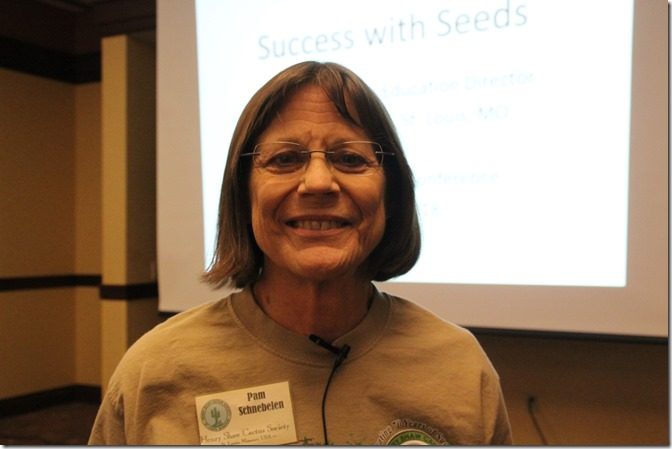
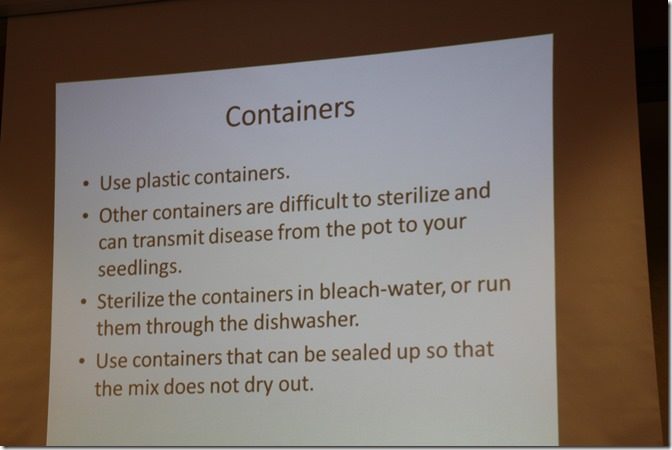
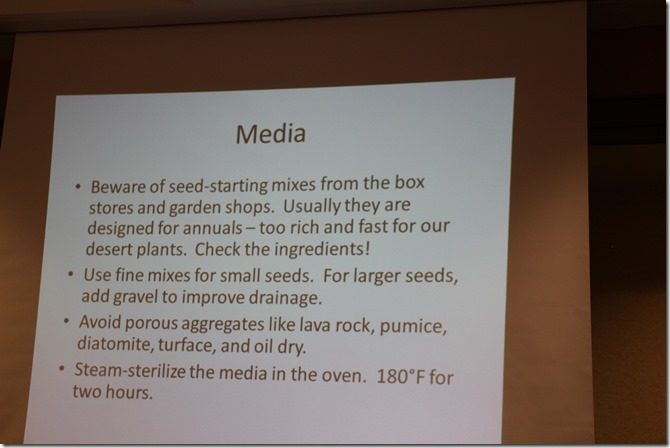
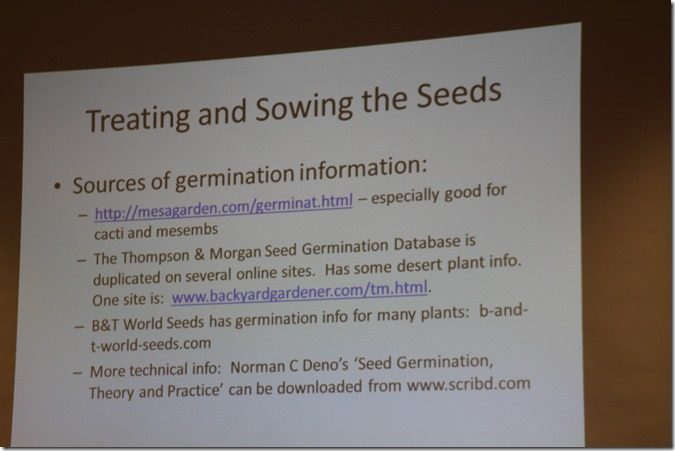
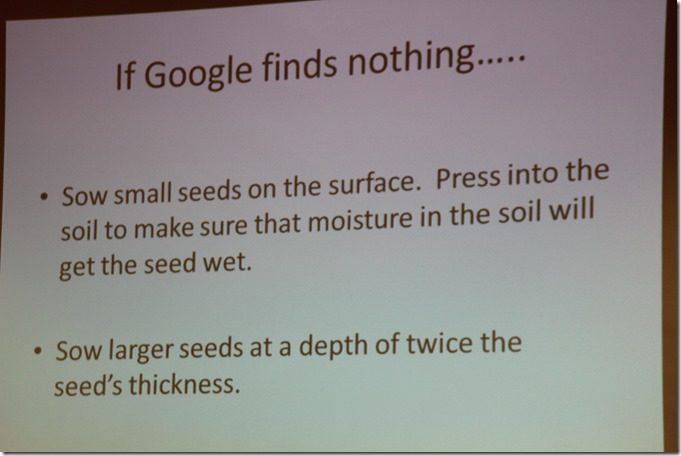
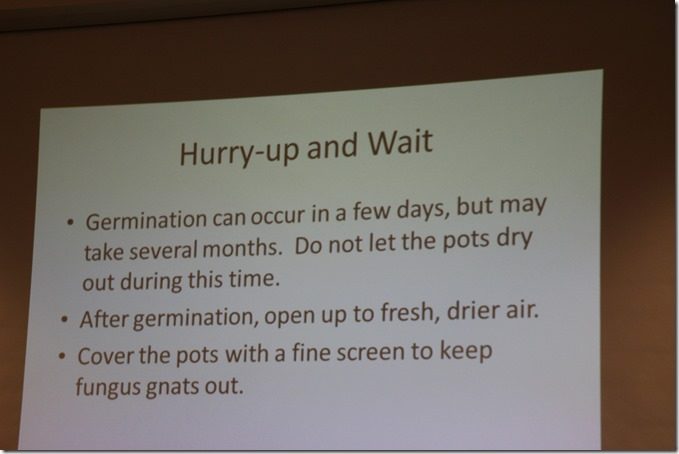
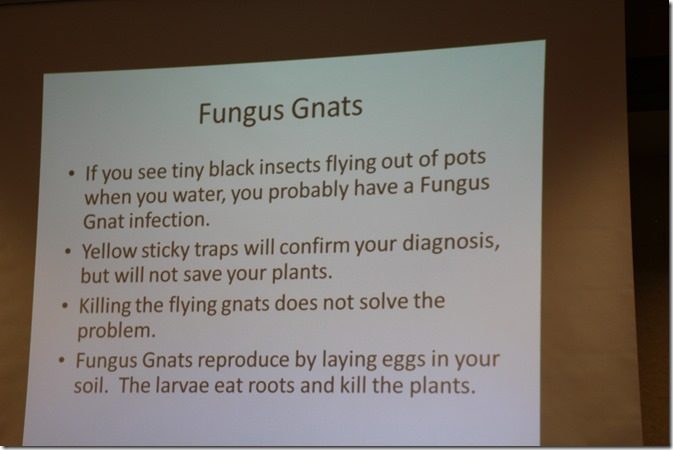
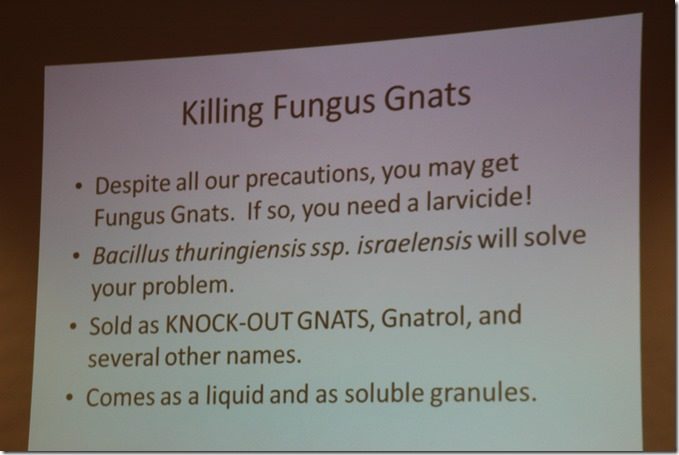
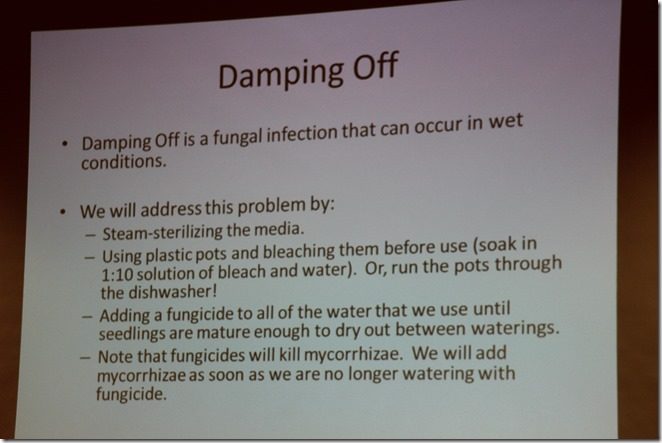
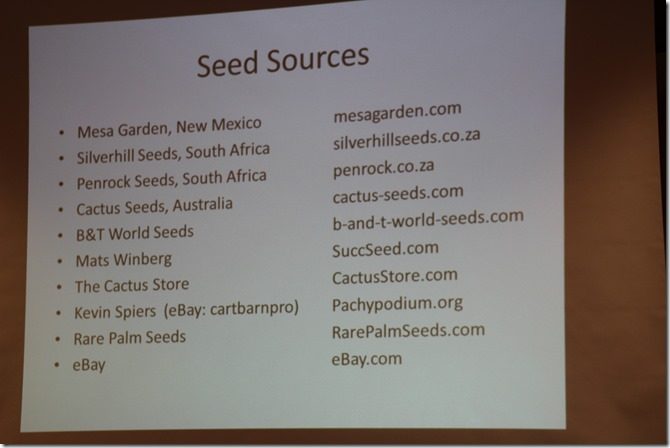
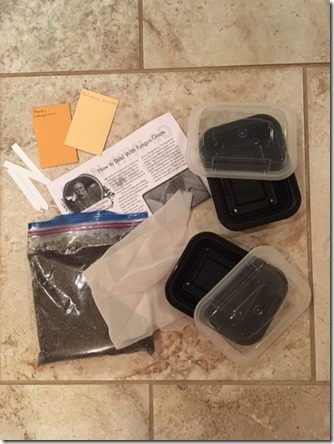
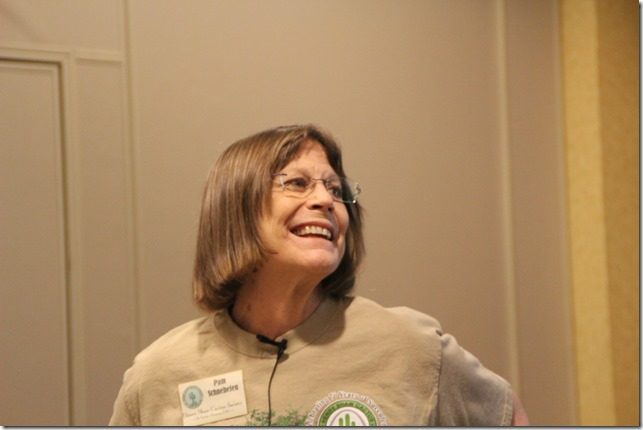
I love this article. Thanks Alice
You are very welcome, Kay.